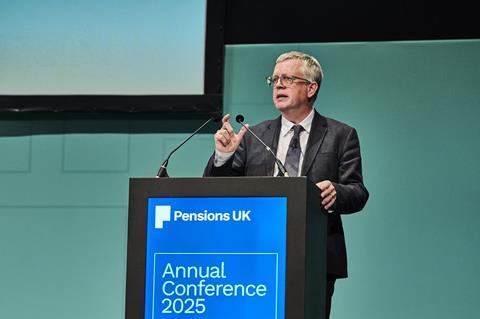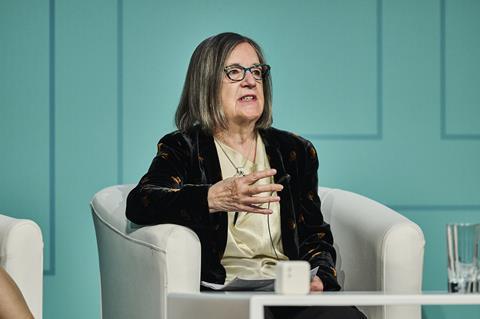The Pensions Commission’s approach will be guided by core principles of “fairness and sustainability”, said Professor Nick Pearce in the opening session of Pensions UK’s Annual Conference in Manchester.
In a speech outlining the Pensions Commission’s work, Pearce said the first Pensions Commission under Lord Adair Turner provided “a solid foundation for building a strong, fair and sustainable pension system” – but there was still work to be done.
Pearce is one of three commissioners, with Baroness Jeannie Drake – who was also in attendance – and Sir Ian Cheshire. He told delegates that the commission aimed to published a “staging post” interim report in the spring.

“It is the three lenses of adequacy, fairness, and sustainability through which we have been asked by the government to assess the health of the pension system,” said Pearce.
Providing a secure retirement goes beyond pensions policy into other areas such as health and social care, but Pearce said the commissioners were “acutely aware that we need not try to use the pension system to fix those broader questions”.
More than 23 million working-age adults are now enrolled into workplace pensions through auto-enrolment – nearly 90% of all eligible employees. While this was something to celebrate, said Pearce, 45% of individuals of working age were not currently saving into a pension at all. He emphasised that the Pensions Commission needed to understand the multitude of factors driving that figure.
Understanding the context of the adequacy challenge
There have also been considerable social and demographic changes since the first commission, Pearce explained.
The financial crisis, Brexit and the Covid-19 pandemic have all contributed to structural changes in the labour market, he said.
“It’s crucial that, whatever recommendations we make, we provide support for a sustainable pension system that is fit to hold up through the demographic challenges of this century.”
Professor Nick Pearce
There has been an increase in different types of insecure and low-paid work that places people at risk of not earning enough in any individual job to trigger automatic enrolment into workplace savings. There has also been a rise in self-employed and gig workers, almost 80% of whom do not save into a private pension.

In addition, the demographic boom of pensioner numbers highlighted by the Turner Commission will see expenditure on the state pension increase from 5.2% of GDP in 2025 to 7.9% of GDP in less than 50 years’ time.
“It’s crucial that, whatever recommendations we make, we provide support for a sustainable pension system that is fit to hold up through the demographic challenges of this century,” said Pearce.
“We’ve been tasked with shaping a pension system that is fit for purpose, sustainable, fair and equipped in the middle of the 21st century and beyond.”






















